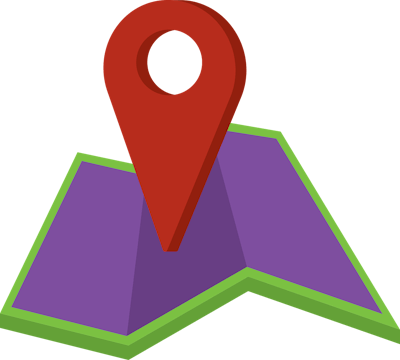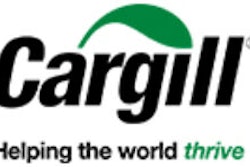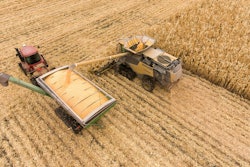
With global animal diseases, consumer demand for sustainability and supply chain woes, the animal feed industry is facing more challenges than ever.
The Institute for Feed Education & Research (IFEEDER) knows that individuals and companies in the industry cannot do it alone. The animal feed industry will need to come together, and IFEEDER is figuring out how best to do this moving forward.
A united animal feed industry voice
The American feed industry has hundreds, if not thousands, of different entities working together to turn raw agriculture materials into finished feed.
While the focus is often on feed mills, the industry also includes micro ingredient manufacturers, livestock producers, equipment manufacturers, academia, transportation companies and more.
“There are many issues that face this industry from consumer demands and consumer concerns to supply chain concerns,” says Steve Lerner, IFEEDER board member and head of Marketing and Product Management, Animal Health and Nutrition, North America for Chr. Hansen Animal Health and Nutrition.
“It’s essential as a collective industry to have the needs addressed centrally, where not one organization would ever have the funding or desire to drive that kind of education or those particular research areas that are good for the collective.”
IFEEDER wants to be that united voice for the industry, and over the past year, it has been working on revising and refining its mission statement.
“IFEEDER provides that forum, an organization where the key consumer concerns and demands can be evaluated and education programs can be put into place to ensure that our members have good messaging,” says Lara Moody, executive director of IFEEDER.
“It also provides that central research as an opportunity for those who could not do it themselves or would not do it. As a collective, the industry can benefit based on the efforts of IFEEDER.”
Understanding IFEEDER’s role in the feed industry
IFEEDER’s most significant obstacle to doing more is the lack of awareness in the industry on what its mission is and how it’s different from the American Feed Industry Association’s (AFIA) mission.
“We just spent the last year putting a strategic plan in place for IFEEDER and revising our mission statement,” explains Moody. “Our mission statement right now is to advance understanding and trust and a sustainable feed and pet food supply chain through timely research and education.
“For us, that’s not only a focus on research, as you might think about traditional academic research, but also research that helps us bring together stakeholder needs and identify the gaps in data flow or quantification methodologies for different metrics and indicators, specifically in the food supply chain sustainability space right now as is relevant to feed,” she adds.
Part of IFEEDER’s new mission will be to better reach out to and work with the other stakeholders in the industry and industries who are allied with feed. The charity has developed a set of goals to achieve that end.
“Over the past year, we have identified some goals for IFEEDER,” says Moody. “One of those goals is being a resource that is utilized and recognized as a key point of information, especially in the sustainability space, but others as well, for not only the feed sector but for our peer organizations.
“Our second goal is to have research outcomes that support a sustainable feed and pet food supply chain,” she continues. “The third goal is to use that brand recognition and awareness of IFEEDER to diversify our funding sources.”
IFEEDER plans to attack these goals from multiple angles. It hopes more awareness will lead to more members and donations, expanding the capacity to get involved in more projects.
But IFEEDER also wants to expand its influence and advance more projects through partnerships with other organizations, whether corporate, industry or allied associations, fellow charities or government agencies.
Feed industry sustainability roadmap
The largest project IFFEDER is currently working on is the Feed Sustainability Roadmap. Consumers are demanding a more sustainable agriculture supply chain, and consumer-facing companies are starting to demand ways for feed to become part of the story they tell customers.
“The sustainability roadmap is the cornerstone piece for IFEEDER right now, relative to our sustainability efforts,” explains Moody. “One of the things about feed in the sustainability space, especially within the food supply chain, is that feed flew under the radar for a long time. The brunt of influence, or pressure, is on the producer side; it’s on the soybean, corn, feedstuffs and animal production side. We sit between the production side and the downstream companies telling their sustainability story.”
The Feed Sustainability Roadmap is meant to lay out the stakeholder map to help the feed industry have a collective starting point for its sustainability story. The roadmap will lay out who the influencers are above and below the feed industry in the supply chain, who the loudest voices are, who is part of the feed sector and what are the elements within the feed sector. With the starting point clarified, IFEEDER will then be able to prioritize projects based on what the industry needs.
The project has involved exploring corporate sustainability reports, how people define sustainability online, what kind of goals and targets are out there, and what metrics will be relevant to those stakeholders.
“We hope to roll the roadmap out in September,” explains Moody. “It won’t be the final one, but it will be the first time we put something out there for folks to react too. “We’ll be rolling it out at our Feed System Sustainability Summit from September 28-29 in Milwaukee, WI. In this invitation-only workshop, we will be sitting down with folks working within not only the feed sector but our stakeholders up and down the value chain to identify what we need to catalyze action in this space.”
If you want to learn more about or get involved with IFEEDER or let them know your thoughts on the feed industry, visit ifeeder.org.
.jpg?auto=format%2Ccompress&crop=faces&fit=crop&h=48&q=70&w=48)













